 |
 |
|
| Stover-Myers Mill prior to 1885 | Stover-Myers Mill (at right of large tree at center) prior to 1904. |
 |
 |
|
| Stover-Myers Mill prior to 1885 | Stover-Myers Mill (at right of large tree at center) prior to 1904. |
A mill was a major part of the community and villages often developed around a mill. This section of the web site will feature the Stover-Myers Mill in Bucks County, PA. The mill is located on Dark Hollow Road at the Tohickon Creek near Pipersville in the municipalities of Bedminster Township and Tinicum Township. Today the mill is open to the public as a museum from June to September on selected weekend days from 1:00 - 4:00 p.m. (this schedule is subject to change).
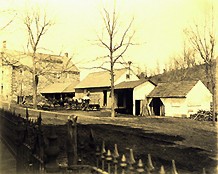 |
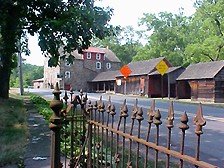 |
|
| Stover-Myers Mill circa 1910 | A similar view of the mill today. |
The Stover-Myers Mill was one the first 29 mills owned by Stover millers in Bucks, Lehigh and Northampton Counties in Pennsylvania and across the Delaware River in Hunterdon and Warren Counties in New Jersey.
Bridges crossing the waterway used for the mill were often found near the mill. In Pipersville, the bridge needed to be repaired in 2002.
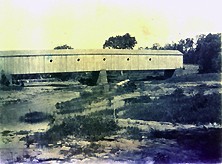 |
||
| This covered bridge on Dark Hollow Road, located next to the mill, was destroyed by fire in 1904. | This bridge was in place until recently. | |
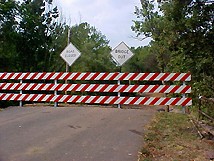 |
||
| The bridge in 2002 has been knocked down and the road is closed to traffic. | The new bridge to be constructed has an expected date for completion of 2006. |
|
Spillway located upstream of the mill (early 1900's). |
Mills were placed on the banks of a fast-moving, shallow river or by a waterfall. A steady supply of water was needed all year long. Being near a supply of timber for a source of lumber was also important.The trees were used to build the gristmill. When the proper location was found it was often a community effort to build the mill. | |
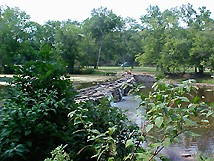 |
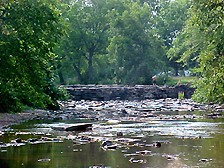 |
|
| View of dam and spillway today near the beginning of the mill race. | View of dam from downstream (near the mill). |
PESTS
Many animals and insects caused problems because they wanted to eat the grain. Rats, mice, raccoons, and ground hogs got in the mill and ate the grain and chewed through bags of grain. Beetles, weevils, moths, and other insects lived in the grain. Most mills had a cat to keep some of the pests under control.
FLOODS
Since the mill is near a mill pond the mill pond can flood. Pressure on the dam could break it. Raging waters could also damage or wash away a mill. Ice on early waterwheels could also cause accidents for millers trying to free the wheel from the ice.
FIRE
Millstones were never to touch, and gears needed to be friction free to avoid sparks and fire. These mills of the past were made primarily of wood and could burn easily.
| MILLS OF THE PAST | STOVER - MYERS MILL HISTORY & OWNERSHIP | MILL POWER | MILL MACHINERY |
| MILLSTONES | WHEAT TO FLOUR | STOVER-MYERS SAWMILL | REGIONAL MILLS |
|
|